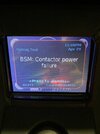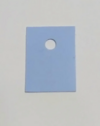DanielFriederich
Member
The PEM is basically standard inverter electronics, so called h-bridge design.
H-bridge - Wikipedia
The non "digital" parts are standard electronics parts and IGBTs don't have to be "matched" like you would have to do in a hifi amp. The tricky part is the main board which you see immediately after opening the PEM and the software running it (boards in the front of the Roadster). Pete(r) Gruber in Phoenix and his team have done a lot of reverse engineering and also Carl Meadlok in Seattle. I don't know how far GS Technology has gone into the PEM 'til now.
If it's only blown IGBTs somebody with soldering knowledge should be able to do the exchange. Capacitors should be checked too since they age over time and there's at least one incident I am aware of where a bad cap blew up in a PEM - that didn't look nice :/
I had one row of IGBTs blown on one megapole and still the BSM fuses didn't blow... also wired battery minus and ground wrong way to the PEM... errors and little sparks... still no blown fuse... Guess I was damned lucky that time... carried the Roadster to SEC FRA to find out the wrong wiring... D'oh...
One more: don't use ceramic isolation stripes like I did... they are used in windmill inverters eg. but I had one broken due to vibrations and the type how they are mounted and the result was the blown IGBTs... The original gum like paste deteriorates over time which is the main cause for PEM breakdowns. I am not sure how Tesla handles this issue meanwhile in refurbed PEMs but a few years ago still this paste was used. A better solution is ceramic foil which I have now since 2.5 years installed by GS. Works....
One more thing about PEMs and sport version. As I remember one PCB in the front was exchanged when Roadsters were upgraded to the sport version, imo it's mostly software based driving the megapoles harder than in the normal (software) version. But I might be wrong there.
H-bridge - Wikipedia
The non "digital" parts are standard electronics parts and IGBTs don't have to be "matched" like you would have to do in a hifi amp. The tricky part is the main board which you see immediately after opening the PEM and the software running it (boards in the front of the Roadster). Pete(r) Gruber in Phoenix and his team have done a lot of reverse engineering and also Carl Meadlok in Seattle. I don't know how far GS Technology has gone into the PEM 'til now.
If it's only blown IGBTs somebody with soldering knowledge should be able to do the exchange. Capacitors should be checked too since they age over time and there's at least one incident I am aware of where a bad cap blew up in a PEM - that didn't look nice :/
I had one row of IGBTs blown on one megapole and still the BSM fuses didn't blow... also wired battery minus and ground wrong way to the PEM... errors and little sparks... still no blown fuse... Guess I was damned lucky that time... carried the Roadster to SEC FRA to find out the wrong wiring... D'oh...
One more: don't use ceramic isolation stripes like I did... they are used in windmill inverters eg. but I had one broken due to vibrations and the type how they are mounted and the result was the blown IGBTs... The original gum like paste deteriorates over time which is the main cause for PEM breakdowns. I am not sure how Tesla handles this issue meanwhile in refurbed PEMs but a few years ago still this paste was used. A better solution is ceramic foil which I have now since 2.5 years installed by GS. Works....
One more thing about PEMs and sport version. As I remember one PCB in the front was exchanged when Roadsters were upgraded to the sport version, imo it's mostly software based driving the megapoles harder than in the normal (software) version. But I might be wrong there.




